Seed Shipping Co. Ltd. and Purvis Shipping Co. Ltd.
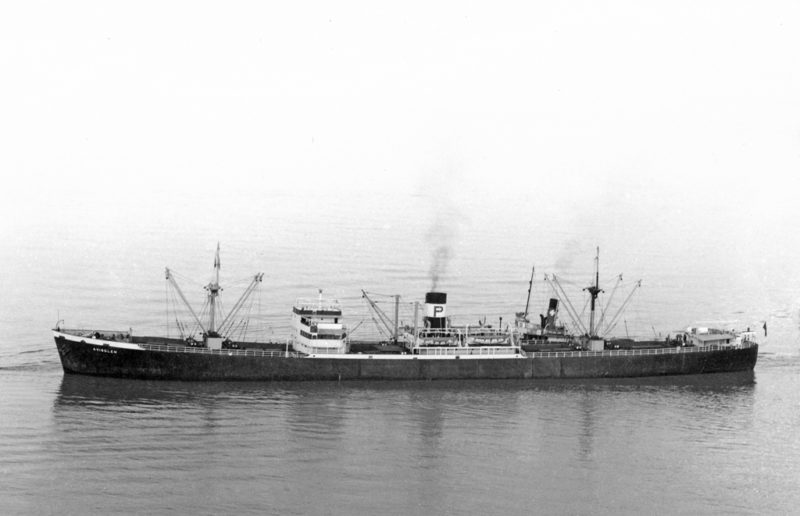
This is the story of two Newcastle shipowning families that were linked by their respective shipowning companies. Thomas Hartley Seed (1881-1939) was a busy Newcastle coal factor and exporter as well as a shipbroker of Harper, Seed & Company of Exchange Buildings in Newcastle, Hull, London, Cardiff and Newport with a total of 37 staff in 1914. Henry George Harper had founded this company in 1876 and the steamer Greta built in 1873 by J. Softley & Company at South Shields was an example of his shipbroking transactions. Thomas H. Seed joined Henry George Harper as a partner in 1909 to form Harper, Seed & Company, but he suffered significant embarrassment during the Great War when he was found guilty of attempting to sell coal to Germany. He was heavily fined but went on to become the head of Thomas H. Seed & Co. Ltd., shipowners based in Newcastle, Hull and London. He had been born in 1881 at 3 Cheltenham Street in Blackburn to his parents Ellen and Charlie Seed, who was an insurance agent. He obtained his first employment, like his father, as an insurance and ship’s agent and shipbroker in the Port of Blyth.
He married Aimee Montague Seed, originally from France, and they lived in a large Victorian house originally called Loansdean House, but Thomas changed its name to The Kylins in the 1920s. A kylin is a creature from Chinese legend that brings benevolence, wisdom and protection to those he guards throughout their lives. The two storey large house had many rooms all with bay windows on the front facade and 5.6 acres of grounds. Thomas also lived at Apley Grange in Harrogate during the 1920s decade, a grand mansion built in 1914 by and for William S. Arnold (1858-1915), a building contractor. Thomas H. Seed found Apley Grange to be convenient for his many business interests spread around the East Coast of England. He founded the Seed Shipping Co. Ltd. in Newcastle with a share capital of £50,000 on 6th January 1922, with shares quoted on the London Stock Exchange.
Noel Wilfred Purvis was born in 1896 in Italy to parents Johnson Hardcastle Purvis (born 1854) and Barbara Melvile Purvis (born 1863). The father of Noel had emigrated to Italy in the 1880s and lived in Pozzuoli near Naples, with two of his three brothers also born in Italy, and the family then returned in 1901 to live in Morpeth and Elswick in Newcastle. Noel W. Purvis was apprenticed as a clerk to a Newcastle shipowner in 1911, and continued to work in the shipping industry until he set up Purvis Shipping Co. Ltd. in 1941 to manage ships for the war effort and the Ministry of War Transport. In 1946, he purchased the dormant Seed Shipping Co. Ltd., which had become dormant at the end of 1933 as the Great Depression bit hard into the finances of Newcastle tramp and collier companies. He renamed the dormant company as the Aviation and Shipping Co. Ltd.
The Tyne pilots belong almost up to the present time to another branch of the Purvis family. John Purvis was Pilot Master from 1893 to 1905, serving with no fewer than twenty other members of the Purvis family as pilots at that time. There were 16 members of the family as pilots in 1961 of the Tyne Pilotage Authority, six in the year 1981, four out of a dozen pilots in 1988, and two out of eight pilots in 1998. Alan Y. Purvis retired in 2008, the last of the many Tyne pilots of the Purvis family.
SEED SHIPPING CO. Ltd.
The first ship of this company had been launched on 1st March 1911 as Yard number 168 for the Atlantica Sea Navigation Co. Ltd. of Budapest as Hunnia of 2,234 grt by the Wood, Skinner & Co. Ltd. yard at Bill Quay in Gateshead. This yard had an extensive river frontage of 380 feet with eight slipways of up to 500 feet in length to build steam tramps and colliers. It was owned by two experienced shipbuilders in William Wood, who lived in Jesmond in Newcastle, and James Skinner, who lived in South Shields. The yard completed 330 ships until it failed financially at the end of 1925, with the gaunt frame of an incomplete collier hull remaining throughout the Depression of the 1930s until finally broken up in situ. Hunnia had a single deck with a poop, bridge and top gallant fo’c’stle, with accommodation ‘midships for the Master, navigating officers and the engineers, with the crew housed in the fo’c’stle. She carried ample water ballast in her cellular double bottom, forepeak and aft peak. She had two masts with a large crow’s nest on the foremast, and ample deck machinery. Two large multitubular boilers raised steam for a triple expansion steam engine supplied by Blair & Co. Ltd. of Stockton. She had two changes of name before she joined the Newcastle company as Monica Seed in 1922. She was sold in 1924 to Japanese owners and renamed Kogiku Maru and wrecked on 7th December 1932 off Shinto Island forty nautical miles to the south of Chemulpo while on a voyage from Wakamatsu to Chemulpo with coal.
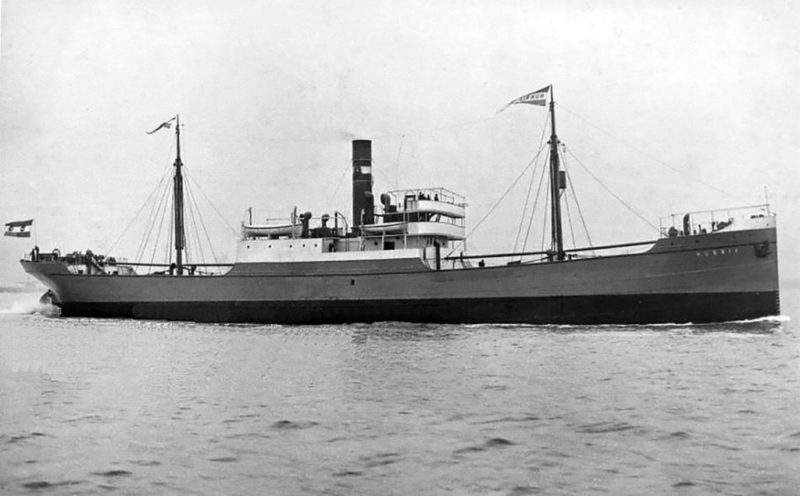
Four more ships joined the Newcastle Seed company during 1922 to 1924. Phyllis Seed of 2,194 grt had been launched by Swan, Hunter & Wigham Richardson Ltd. at Sunderland on 2nd February 1920 and completed two months later as Langfond for Sigval Bergesen of Stavanger. After purchase, she gave one year of trading before being sold in 1923. She was later torpedoed and sunk as Inger Toft on 16th March 1945 by U722 three miles off Neirst Point on the island of Skye, all of her crew being fortunately saved. She was on a voyage from Rekjavik to Loch Ewe and London with 885 tonnes of herring meal and cod liver oil in drums, and had been taken over in 1940 at Methil by the Ministry of War Transport. The collier Portinglis of 1,867 grt had been completed in 1908 by Irvine’s Shipbuilding & Dry Dock Co. Ltd. at West Hartlepool for Furness, Withy & Co. Ltd. and was transferred to Johnston Line as Westmore just before her sale to the Newcastle company in 1923 to become Phyllis Seed (2). She was sold after two years of service to Scandinavian owners and later broken up in 1955 under the name of Triton of Finland after a career of 47 years.
The Pelton Steamship Co. Ltd. of Newcastle engines ‘midships steam collier Alto built in 1902 joined the fleet in 1923 as Relentless and was renamed Elva Seed, and was sold to Japanese owners in 1924 and renamed Nitaga Maru, becoming Hikosan Maru in 1934, and was bombed and sunk by American planes on 22nd January 1945. The fourth Seed ship of the early group was another old collier of 1,860 grt built in 1907 by Osbourne, Graham at Sunderland as Westhampton and was sold to Hogarth of Glasgow as Baron Cathcart in 1915 and joined the company as Marjorie Seed in 1924. She was wrecked on Boxing Day 1924 when she stranded on Lady Isle, Ayr Bay in the Firth of Clyde estuary with a cargo of coal.
Thomas Hartley Seed came in for some heavy criticism on two counts, firstly for employing Latvian crews instead of British crews but with British Masters and officers, and secondly for placing an order for a trio of engines ‘midships sister ships with the New Waterway Shipbuilding Company at Schiedam in Holland. This trio were of 3,300 dwt with an overall length of 291.0 feet, moulded beam of 44.9 feet and moulded depth of 19.4 feet, and powered by a triple expansion steam engine supplied by their builders, and had a corrugated hull and a cellular double bottom of length 246 feet carrying ample water ballast of 650 tonnes. Elva Seed (2) was completed in June 1924, Phyllis Seed (3) in the following December, and Monica Seed (2) in the following March, having been launched by Phyllis Seed of the Seed family. Elva Seed (2) was sold in 1928 to Gorthon Rederi A/B of Helsingborg in Sweden and renamed Stig Gorthon, and was mined and sunk on 5th July 1941 to NW of the Outer Jade Light Vessel in the river Weser.
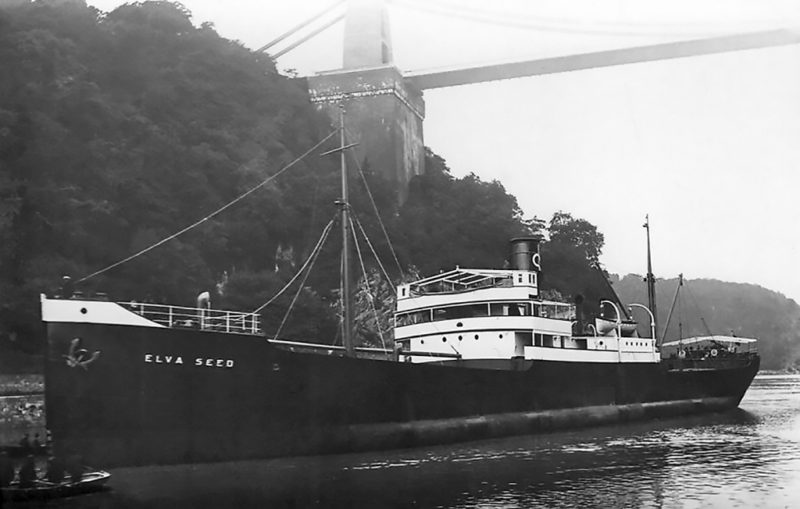
The company fought a lawsuit filed by one of their charterers, Rio Tinto, in 1926 when one of their ships sailed from the Clyde on a course of SSE instead of SSW and ran aground on a rock. The barrister for Rio Tinto argued that this constituted a deviation in course, but when the court heard that the Master had eaten a hearty Christmas dinner of goose and plum pudding, they decided that the Master was ‘not himself’ and there was no deviation of course and dismissed the case. The plea of ‘deviation of course’ was a favourite ploy by charterers to claim money when ships ran aground, or were seriously delayed by days for one reason or another.
Thomas Hartley Seed moved offices from Proctor House in Newcastle to Prince’s Buildings in King Street in Newcastle, and was trading four ships in the North Sea coal trade and Baltic timber trade in 1928. He then purchased in 1929 the old Christopher Marwood of Whitby tramp Erlesburgh of 3,809 grt and 6,500 dwt, launched on 9th September 1911 and completed in October 1911 by William Pickersgill at Sunderland. She had an overall length of 348.5 feet, moulded beam of 50.2 feet, moulded depth of 23.5 feet, and a loaded draft of 21.7 feet with a short fo’c’stle of length 37 feet, bridge deck of 100 feet in length and a poop of 30 feet in length. She had a grain capacity of 330,000 cubic feet in her holds and was renamed Montague Seed and gave four years of worldwide deep sea trading before being sold to L. G. Keranis of Andros in Greece in 1933 and renamed Aghia Thalassini. She was wrecked on 20th September 1951 on the Pinda Shoal 50 miles north of Mocambique in position 14°15′ South, 40 °48′ East while on a voyage from Durban to Tanga with coal.
However, the onset of the Great Depression at the start of 1930 reduced the Seed fleet to three ships that year, and two ships in 1932 in Montague Seed and Phyllis Seed (3), as the very low freight rates took a firm grip with two hundred ships laid up on the Tyne. The last ship was sold in 1933 and the company, which had not paid any dividends since 1925, became dormant at the end of 1933 for the next fourteen years.
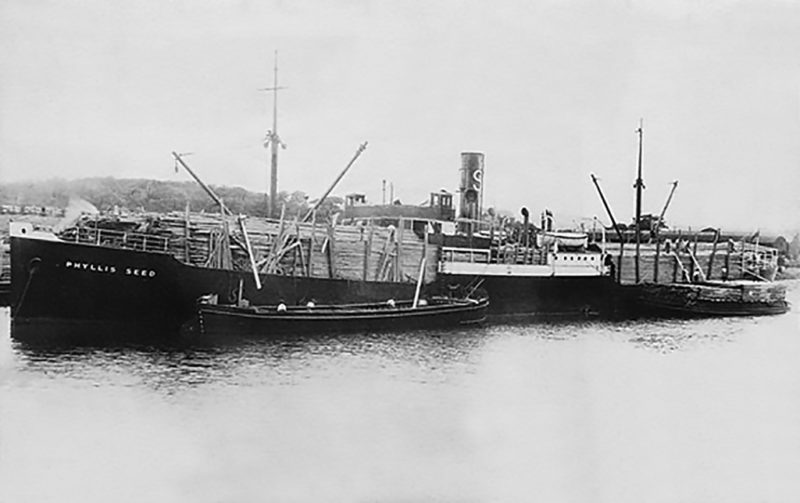
AVIATION & SHIPPING CO. Ltd.
Noel Wilfred Purvis had set up Purvis Shipping Co. Ltd. in 1941 to manage wartime ships for the Ministry of War Transport. He then purchased, at the end of 1946, the dormant Seed Shipping Co. Ltd. and renamed it as the Aviation & Shipping Co. Ltd. The Articles of Association were changed so as to include any future aviation activities in the trading of the company. Hunting-Clan Aviation was another example of the successful trading of both aviation and shipping interests, and Bowring were major civil aviation insurers, with Court Line Aviation Ltd. trading until liquidation in 1974. The capital of the company was increased from £50,000 in 1946 to £180,000 in June 1949, with the five directors and shareholders of the company including J. M. Purvis, Lord Broughshane, and Viscount Massereene & Ferrard of Antrim Castle in Northern Ireland. William Henry Davison was created Lord Broughshane in 1945 and was a Master of the Honourable Clothmakers Society and he died in 1953, and was succeeded by Patrick Davison, a wartime Mosquito pilot.
Noel W. Purvis then purchased his first owned ship in the elderly Romanian State cargo ship Bucegi of 4,531 grt and built in 1913 by Greenock & Grangemouth Dockyard Ltd. She was traded for a year and then sold to Finnish owners in 1947 and renamed Petsamo and was broken up in 1959. Noel Wilfred Purvis then purchased in 1947 two wartime ‘Scandinavian’ engines ‘midships types of 4,700 dwt built by William Gray at Hartlepool and renamed them as Avisbrook and Aviswell, thus starting a standard company nomenclature of a prefix of ‘Avis’. Noel Wilfred Purvis was Chairman, Managing Director and manager of the ships of the Aviation & Shipping Co. Ltd., and owner of most of the shares of the Purvis Shipping Company Ltd. under an agreement dated 2nd September 1947.
Three more tramps were purchased in 1947/48, the standard ‘Ocean’ type of 10,000 dwt Ocean Vision renamed Avismere and traded for eight years until sold and renamed Deep River, arriving for breaking up at La Spezia in Italy on 10th June 1962. The ‘Paddy’ Henderson ship Martaban of 4,225 grt and built in 1934 by the Henderson yard on the Clyde was purchased in 1948 and renamed Avisglen. She was sold after two years of trading to Finnish owners and renamed Ariana, but stranded in August 1952 and sank. The Lambert Brothers managed tramp Coulmore of 3,772 grt, completed by the Ayr Dockyard in 1936, was purchased in 1948 and renamed Avisford. She had suffered serious wartime hull damage when torpedoed on 10th March 1943 in the North Atlantic by U229, with the crew abandoning ship into lifeboats, which were later swamped with forty men losing their lives and only seven survivors. A deep sea rescue tug towed the still floating ship to the Clyde and arrived on 23rd March 1943 for extensive repairs.
In late 1947, the Purvis Shipping Ltd. purchased the entire share capital of Neill & Pandelis Ltd. for £114,000 and subsequently changed the company name to Ascot Shipping Ltd. Two standard ‘Ocean’ war built types of 10,000 dwt were on charter from the Ministry of Transport and Shipping, and were purchased and renamed Avisvale and Avismoat. This pair and three more war built ships of this size purchased between 1949 and 1953 were all chartered to the British Iron & Steel Corporation (BISCO) to carry iron ore from North Africa and other areas of the world to British steel smelters. This trio were Avisbay (the former Empire Labuan and converted into the naval stores carrier Holm Sound and reconverted for commercial trading), Avistone (ex Empire Martaban) and Avisbank (ex Tower Hill).
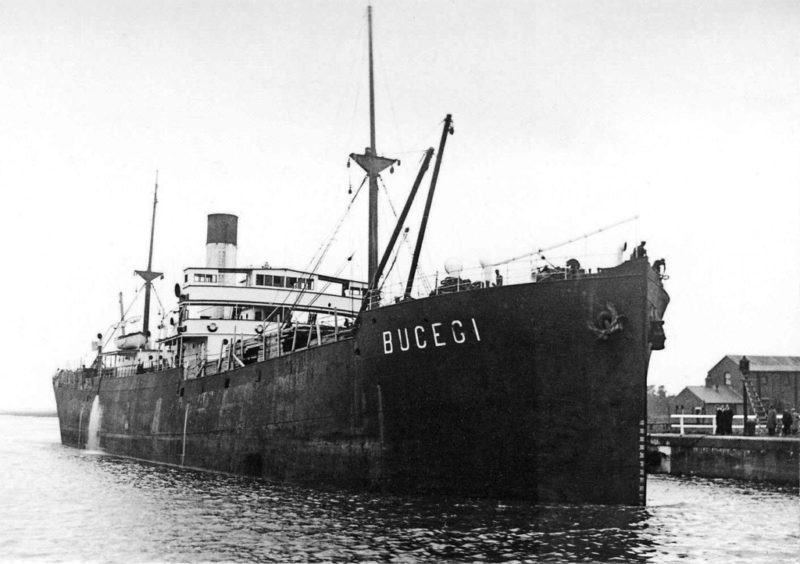

On the last day of 1954, the assets and the two owned ships of the Ascot Shipping Ltd. were sold to the Purvis Shipping Co. Ltd. at their book values existing at that time, both ships being valued at £80,000 each. This deal was subject to the completion of their existing time charters to BISCO, which agreed to the transaction as neither of the charters was due to expire until the last day of 1956. Thus, on the last day of 1954, the fleet was composed of five tramps all on charter to BISCO in Avistone, Avisbank, Avismere, Avisvale and Avismoat. Four of these were expensive to run coal burners and only one was a motor vessel. Avisvale was sold on 15th February 1955 and Avismoat on 14th March 1955 on completion of their last voyages with iron ore from Bona in Algeria. They were replaced on charter to BISCO by three motor tramps during 1955 in Avisglen (2) and built by Doxford in 1941 as Kafiristan for Common Brothers of Newcastle, Avisbrook (2) and built by Lithgows in 1944 as Trevanion for Hain, and Avisbay (2) and built by Short Brothers at Sunderland as Newbrough in 1941 for Common Brothers. Kafiristan had served as a ‘CAM’ ship with a single fighter plane launched over the fo’c’stle and not recoverable during wartime convoys.
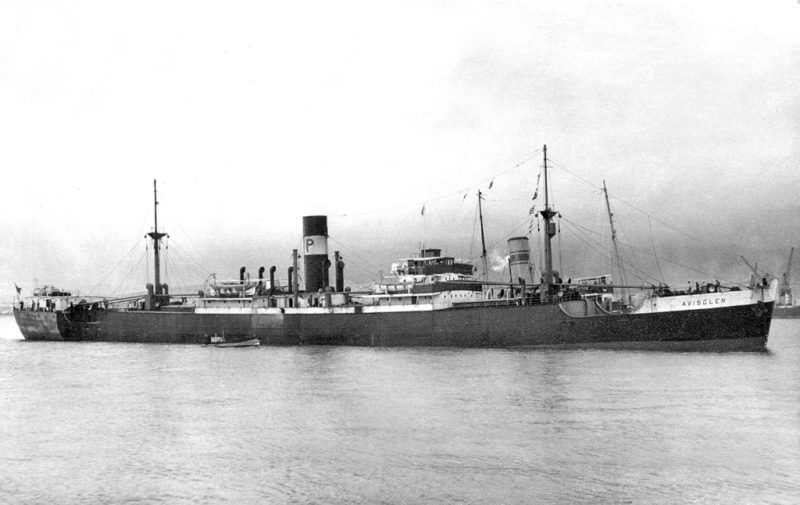
The five ship fleet in June 1955 of the Aviation & Shipping Co. Ltd. were all busy transporting iron ore on charter to BISCO. They could fly the pennant of that company or the pennant of the Purvis Shipping Company Ltd., which had originally six black and red vertical bands with the black bands bearing the white letters ‘PSC’ in descending scale, or the latter blue flag with a white diamond bearing a red ‘P’.
The standard war built type Empire Tristram was twice badly damaged by German V1 ‘Doodlebug’ flying bombs in the Surrey Commercial Docks in late June and early July of 1944 and was towed to Blyth Dry Docks for repairs. She was sold in 1946 and renamed Hollypark and again in 1955 and renamed Gogovale, and was then purchased in 1957 and renamed Avisvale (2). After four years of management by Purvis Shipping Co. Ltd. she was sold in 1961 for management by S. Catsell & Co. Ltd. as St. Nicolas until she arrived for breaking up at Split on 28th January 1967.
Noel W. Purvis then filed a case in 1958 against the Government Inland Revenue under Schedule 14 of the Income Tax Act of 1952 relating to over assessment of tax for the year 1955/56. This case related to the sale and transfer of two ships from the Ascot Shipping Ltd. to Purvis Shipping Co. Ltd., with Noel W. Purvis contending that the voyage profits of this pair should not have been included in the tax assessment. The decision of the court on 21st January 1959 went against the company, and the case was referred to the High Court, which finally decided in 1961 against the appeal.
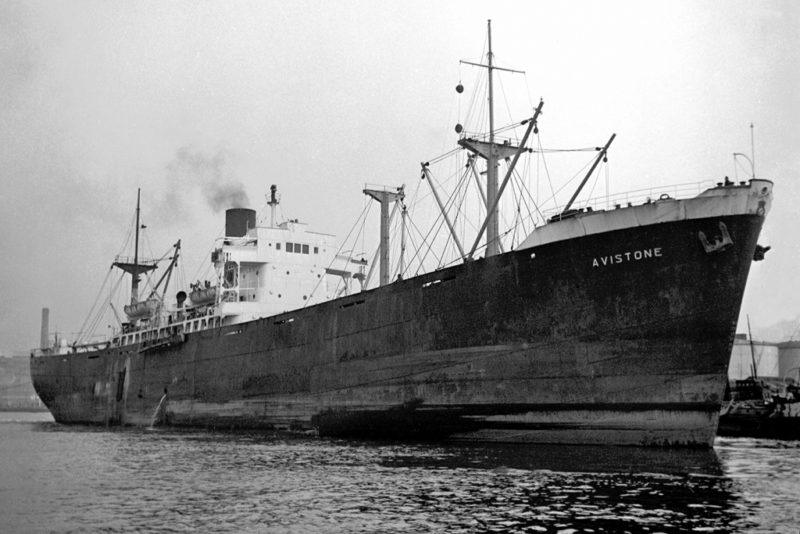
In 1961, four war built tramps on charter to BISCO remained in the fleet, and the last to be sold was Avismoat, formerly Ocean Liberty, for further trading in 1964 as Newgrove. However, one modern cargo-liner was on the stocks at the Bartram yard at South Dock in Sunderland. She was ordered on 29th September 1960 and launched on 28th June 1961 as Yard number 391 as Avisfaith and completed in February 1962. Colonel Robin A. Bartram toasted the successful launch of the ship with a bottle of champagne, the sponsor also having broken a bottle of champagne over her bows. She was of very similar appearance to the later ‘SD14’ design produced by Austin & Pickersgill Ltd. with four holds in front of the navigating bridge and one aft of the bridge, and could be said to have been an early prototype. She was of 7,868 grt and 11,735 dwt on dimensions of length overall of 461.0 feet, moulded beam of 60.0 feet, moulded depth of 38.0 feet, and loaded draft of 28.7 feet. She was powered by a five cylinder Gotaverken oil engine of 6,300 bhp built on the Tyne by the North Eastern Marine Engineering Co. Ltd. to give a service speed of 14.5 knots. She had two masts forward and a set of kingposts aft at number five hold, with heavy lift derricks serving numbers 2 and 4 holds and a dozen derricks of lower capacity.
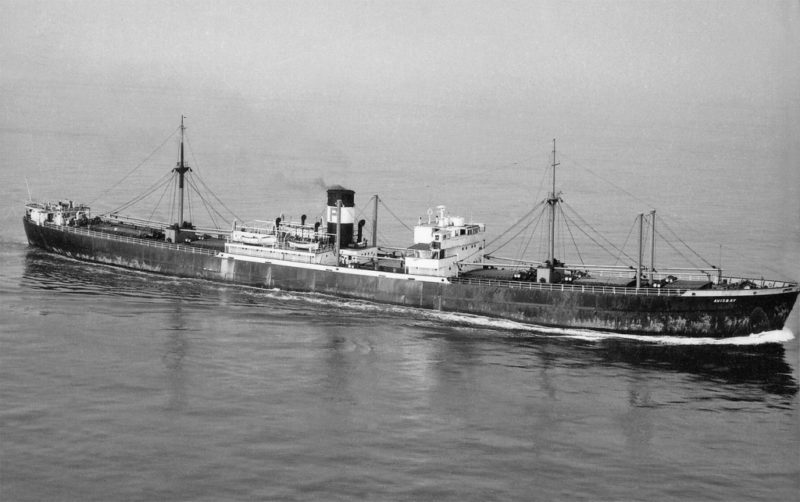
Avisfaith made her maiden voyage under Capt. Evans with a Malay crew and British officers, and saw much worldwide trading on time charter to liner companies, being regularly chartered for voyages to the Caribbean, where she would load sugar at Havana or Cienfuegos in Cuba or Kingston on Jamaica for a voyage charter via the Panama Canal to Far Eastern ports in Japan (Yokohama and Osaka), China (Shanghai and Tsingtao), North Korea (Pyongyang and Chongjin) and Russia (Vladivostock and Kholmsk). A cargo of Cuban sugar on Avisfaith could not be prevented from transitting the Panama Canal by the American authorities as she was a British flagged ship and had right of passage, although the American authorities kept a dossier of her regular transits of the Panama Canal between 1st January 1963 and 15th March 1965. She would then be chartered for the return voyage to load rice and general cargo at Hong Kong, Philippines, Singapore, Bangkok, Belawan (Sumatra) and Indonesian ports before returning via Colombo, Aden and the Suez Canal to Northern European ports. These Round the World voyages were usually six months in duration, and she also often back loaded with grain for discharge at U.K. ports at J. Rank Flour Mills.
After her sale to D. Simatos of Piraeus Street in Athens in 1971 she was renamed Alexandros B for worldwide tramping. The owner had only a single ship registered under the single ship company of Neptuneo Astro Camina S. A. and managed by his Simaba Maritima S. A. of Athens, with P. Wigham Richardson & Co. Ltd. as his London agent. Avisfaith returned to the British flag in 1977 as Egidia for Anchor Line, sailing from Glasgow and Liverpool for Gibraltar, Suez Canal and ports in India and Pakistan. She traded between 1981 and 1984 under the names of Sea Victory and Southdene, and made a slow voyage of two months as Southdene from Port Harcourt in Nigeria to Flushing, arriving on 30th January 1982 with machinery damage, and was laid up. She took her last change of name in 1984 as Asther, and arrived in tow with machinery damage on 20th January 1985 for breaking up at San Esteban de Praia in Spain by Desgauces Vigo.
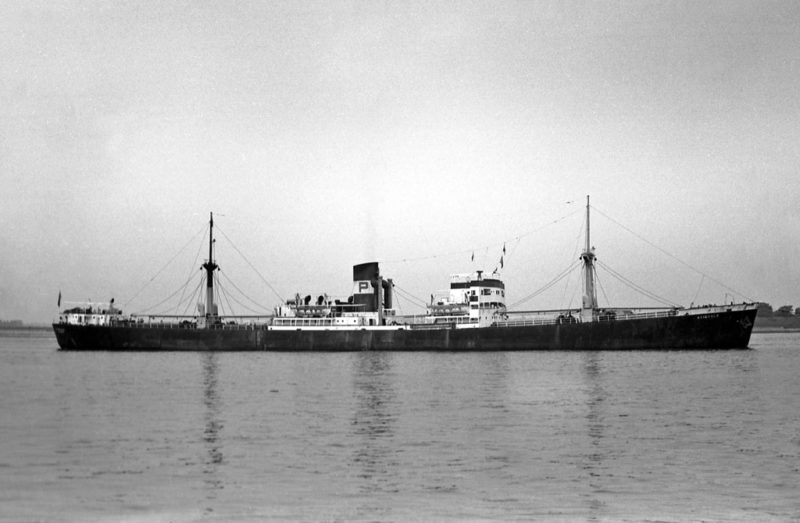
The Head Office of the Aviation & Shipping Co. Ltd. was in St. Clare House in the Minories in London, and the company was sold later in 1971 after the sale of Avisfaith to financial group Junitex Ltd. The shipping companies of Thomas Hartley Seed and Noel Wilfred Purvis had traded for a total of 42 years. There were also several ships managed by Noel Wilfred Purvis for other owners in post war years, including:-
Fort Enterprise of 10,000 dwt, a standard North Sands tramp design built in 1943 by West Coast Shipbuilders Ltd. at Vancouver with a triple expansion steam engine by the Dominion Engineering Works Ltd. at Montreal. She was managed by Hall Brothers of Newcastle for the Ministry of War Transport and sold in 1951 to Tavistock Shipping Co. Ltd. of London with management by Purvis Shipping Co. Ltd. for a year until her sale a year later. She wore a blue flag with a large white ‘T’, and was broken up at Hirao in Japan in 1966 under the name of Otone.
Empire Favour of 10,000 dwt was launched on 22nd August 1945 by the Caledon yard at Dundee and completed in November 1945 under the management of Clark & Service of Glasgow for the Ministry of War Transport. She was sold to Watts, Watts & Company in 1947 and renamed Epsom under the Britain Steamship Co. Ltd. She was renamed Tharros by Greek owners in 1950 until sold later that year to Court Line (Haldin & Phillips Ltd., managers) and renamed Errington Court. She returned to Greek owners as Penelope in 1956 and Andromachi in 1961, the latter name while under the management of the Purvis Shipping Co. Ltd. until her sale and transfer to the Greek flag in 1964. During the Arab Israeli War of Attrition from 1967 to 1975, she was badly damaged by Israeli shelling at Suez on 25th June 1969 and the wreck was abandoned until eventually raised and broken up at Adabiya in Egypt in 1976.
A seven hold British owned bulker of 14,295 grt built in 1958 by Canadian Vickers Ltd. at Montreal for the Wilson Shipping Corporation Ltd. and the Bradley Shipping Co. Ltd., both of the U.K., was managed by Purvis Shipping Co. Ltd. until 1964. This was the bulker Avery C. Adams, which was sold to the Hall Corporation Shipping Ltd. of Canada in 1972 for Great Lakes service, and deep sea service when the St. Lawrence Seaway was closed in winter, and renamed Scotiacliffe Hall. When outbound from Galveston Bay in Texas on the evening of 9th March 1973, she collided with the British vessel Drucilla U, with both ships extensively damaged. Scotiacliffe Hall returned to Galveston for repairs by Todd Shipyards Corporation, and was then chartered by Bunge Canada Ltd. to transport grain in the Great Lakes. She arrived at Gothenburg on 10th March 1975 for conversion into a drill ship for Elf Corporation in Gabon, and was broken up by Norwegian owners in 1991.
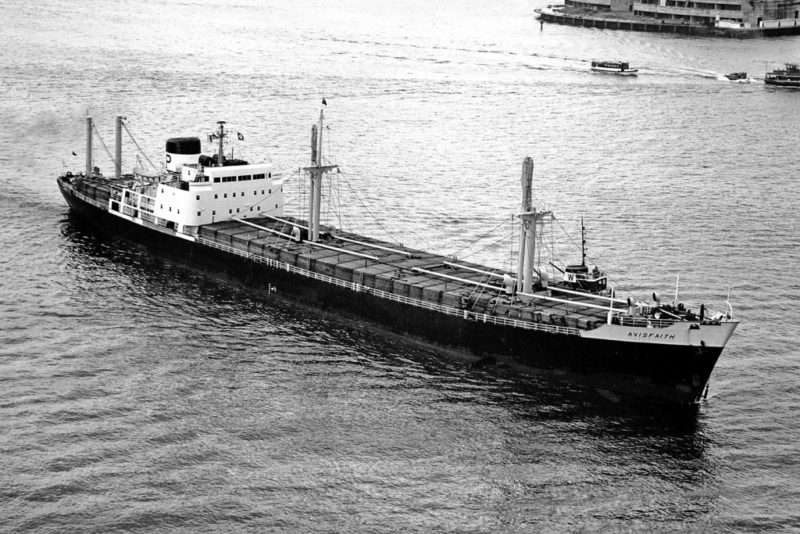
The ore carrier Westriver had been launched as the tanker Kongsten and completed as the tanker Athelchief in 1939 of 16,000 dwt by the Barclay, Curle & Co. Ltd. yard on the Clyde for Athel Line. She was converted into an ore carrier in 1953 as West River, renamed Westriver in 1955, and was managed by the Purvis Shipping Co. Ltd. until 1962 when she was sold to Greek owners and renamed Yanxilas and then broken up later in 1969.
The Tuillier Shipping Group of Switzerland used the Purvis Shipping Co. Ltd. as their London agents until 1969 when they opened their own London office at Ludgate House in Fleet Street as the Transtrade Shipping Co. Ltd. A full list of the history and careers of Tuillier Group ships can be found in a very good article written by Malcolm Cranfield and published in this magazine in two parts in June and July of 2017.
POSTSCRIPT
Noel Wilfred Purvis is buried in a grave in the church cemetery at the village of Great Missenden in Buckinghamshire, where he lived in later life and commuted to his office in the Minories in London. Thomas Hartley Seed died in the house he owned called The Kylins next to Morpeth Golf Club in Northumberland in 1939, and he is buried locally. His large Victorian house and grounds were sold off after his death to Northumberland County Council and were used as the county police headquarters until 1983, when the local council moved in as their main offices for council work and enquiries from the general public. The house and grounds were sold in October 2004 for £7 million to a local builder, and the former grand Victorian Loansdean House has been restored to its former glory. Thus, the lives of two shipowners and ship managers born in the late 19th century and whose fleets flourished in the 20th century came to an end.
It is interesting that Noel Wilfred Purvis did not order a new ore carrier, either of the ‘Port Talbot’ class or of the larger 16,000 dwt type, to continue his charters to BISCO when his war built tramps had reached the end of their useful lives. Instead, he built the cargo-liner Avisfaith for charter to the liner trades or in general cargo and varied bulk tramping, a change to Round the World voyages instead of the shorter, repetitive voyages with iron ore.

None of the ships of these two great fleets survive today, indeed the last Purvis owned motor tramp was Avisfaith built at Sunderland in 1962, and which made her last voyage under tow in early 1985 under the name of Asther with machinery damage arriving at San Esteban de Praia in Spain for demolition. The former managed bulker Avery C. Adams built in Canada at Montreal in 1958 was broken up after her later service as a drill ship in 1991. The total number of ships managed and owned and those represented as agents of the two fleets numbered over one hundred ships in the dry bulk and breakbulk trades. The link between these two interesting and originally North East families was their respective shipowning companies, with one Seed family company reactivated by a Purvis family company.
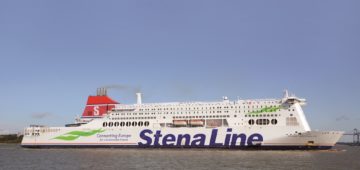



Comments
Sorry, comments are closed for this item